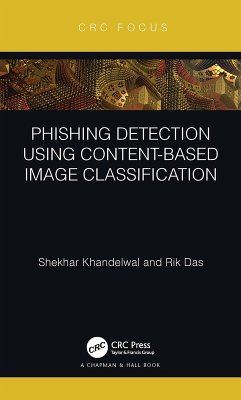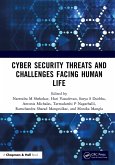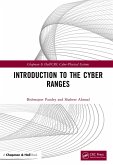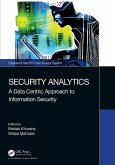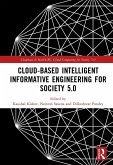

Alle Infos zum eBook verschenken

- Format: PDF
- Merkliste
- Auf die Merkliste
- Bewerten Bewerten
- Teilen
- Produkt teilen
- Produkterinnerung
- Produkterinnerung

Hier können Sie sich einloggen

Bitte loggen Sie sich zunächst in Ihr Kundenkonto ein oder registrieren Sie sich bei bücher.de, um das eBook-Abo tolino select nutzen zu können.
Phishing Detection Using Content-Based Image Classification is an invaluable resource for any deep learning and cybersecurity professional and scholar trying to solve various cybersecurity tasks using new age technologies like Deep Learning and Computer Vision. With various rule-based phishing detection techniques at play which can be bypassed by phishers, this book provides a step-by-step approach to solve this problem using Computer Vision and Deep Learning techniques with significant accuracy.
The book offers comprehensive coverage of the most essential topics, including:
…mehr
- Geräte: PC
- mit Kopierschutz
- eBook Hilfe
![Phishing Detection Using Content-Based Image Classification (eBook, ePUB) Phishing Detection Using Content-Based Image Classification (eBook, ePUB)]() Shekhar KhandelwalPhishing Detection Using Content-Based Image Classification (eBook, ePUB)18,95 €
Shekhar KhandelwalPhishing Detection Using Content-Based Image Classification (eBook, ePUB)18,95 €![Cyber Security Threats and Challenges Facing Human Life (eBook, PDF) Cyber Security Threats and Challenges Facing Human Life (eBook, PDF)]() Cyber Security Threats and Challenges Facing Human Life (eBook, PDF)44,95 €
Cyber Security Threats and Challenges Facing Human Life (eBook, PDF)44,95 €![Introduction to the Cyber Ranges (eBook, PDF) Introduction to the Cyber Ranges (eBook, PDF)]() Bishwajeet PandeyIntroduction to the Cyber Ranges (eBook, PDF)43,95 €
Bishwajeet PandeyIntroduction to the Cyber Ranges (eBook, PDF)43,95 €![Cyber-Physical Systems (eBook, PDF) Cyber-Physical Systems (eBook, PDF)]() Cyber-Physical Systems (eBook, PDF)51,95 €
Cyber-Physical Systems (eBook, PDF)51,95 €![Unleashing the Art of Digital Forensics (eBook, PDF) Unleashing the Art of Digital Forensics (eBook, PDF)]() Unleashing the Art of Digital Forensics (eBook, PDF)54,95 €
Unleashing the Art of Digital Forensics (eBook, PDF)54,95 €![Security Analytics (eBook, PDF) Security Analytics (eBook, PDF)]() Security Analytics (eBook, PDF)44,95 €
Security Analytics (eBook, PDF)44,95 €![Cloud-based Intelligent Informative Engineering for Society 5.0 (eBook, PDF) Cloud-based Intelligent Informative Engineering for Society 5.0 (eBook, PDF)]() Cloud-based Intelligent Informative Engineering for Society 5.0 (eBook, PDF)44,95 €
Cloud-based Intelligent Informative Engineering for Society 5.0 (eBook, PDF)44,95 €-
-
-
The book offers comprehensive coverage of the most essential topics, including:
- Programmatically reading and manipulating image data
- Extracting relevant features from images
- Building statistical models using image features
- Using state-of-the-art Deep Learning models for feature extraction
- Build a robust phishing detection tool even with less data
- Dimensionality reduction techniques
- Class imbalance treatment
- Feature Fusion techniques
- Building performance metrics for multi-class classification task
Another unique aspect of this book is it comes with a completely reproducible code base developed by the author and shared via python notebooks for quick launch and running capabilities. They can be leveraged for further enhancing the provided models using new advancement in the field of computer vision and more advanced algorithms.
Dieser Download kann aus rechtlichen Gründen nur mit Rechnungsadresse in A, B, BG, CY, CZ, D, DK, EW, E, FIN, F, GR, HR, H, IRL, I, LT, L, LR, M, NL, PL, P, R, S, SLO, SK ausgeliefert werden.
- Produktdetails
- Verlag: Taylor & Francis eBooks
- Seitenzahl: 130
- Erscheinungstermin: 1. Juni 2022
- Englisch
- ISBN-13: 9781000597684
- Artikelnr.: 63907735
- Verlag: Taylor & Francis eBooks
- Seitenzahl: 130
- Erscheinungstermin: 1. Juni 2022
- Englisch
- ISBN-13: 9781000597684
- Artikelnr.: 63907735
- Herstellerkennzeichnung Die Herstellerinformationen sind derzeit nicht verfügbar.
Dr. Rik Das is currently a Lead Software Engineer in Computer Vision Research at Siemens Advanta, India. Previously he was with Xavier Institute of Social Service, Ranchi, as an Assistant Professor for the Post Graduate Program in Information Technology. Dr.Das has over 17 years of experience in industrial and academic research. He was professionally associated with many leading universities and institutes in India, including Narsee Monjee Institute of Management Studies (NMIMS) (deemed-to-be-university), Globsyn Business School and Maulana Abul Kalam Azad University of Technology. Dr. Das has a Ph.D. (Tech.) in Information Technology from the University of Calcutta. He has also received his M.Tech. (Information Technology) from the University of Calcutta after his B.E. (Information Technology) from the University of Burdwan, West Bengal, India.
Phishing Detection Techniques. List (whitelist/blacklist) based. Heuristics
(pre-defined rules) based. Visual similarity based. Race between Phishers
and Anti-Phishers. Chapter 2. Image Processing based Phishing Detection
Techniques. Image processing based phishing detection techniques.
Challenges in Phishing Detection using website images. Comparison of
Techniques. Summary of Phishing detection using image processing
techniques. Chapter 3. Implementing CNN for classifying phishing websites.
Data Selection and Pre-Processing. Classification using CNN. CNN
implementation. Performance metrics. Building a Convolutional Neural
Network Model. Chapter 4. Transfer Learning Approach in Phishing Detection
. Classification using Transfer Learning. Transfer Learning python
implementation. Performance assessment of CNN models. Chapter 5. Feature
Extraction and Representation Learning. Classification using Representation
Learning. Data Preparation.. Feature Extraction using CNN off-the-shelf
architectures. Handling class imbalance using SMOTE. SMOTE python
implementation. Machine learning Classifier. Performance assessment of
various experimentations. Chapter 6. Dimensionality Reduction Techniques.
Basics of dimensionality reduction. PCA implementation using python.
Performance assessment of various experimentations. Chapter 7. Feature
Fusion Techniques. Basics of feature fusion technique. Different
combinations of image representations. Different feature fusion approaches.
Performance assessment of various experimentations. Chapter 8. Comparison
of Phishing detection approaches. Classification Approaches. Evaluation of
Classification Experiments. Comparison of the best performing model with
the State-of-the-art. Chapter 9. Basics of Digital Image Processing. Basics
of digital image processing. Basics of extracting features using OpenCV.
Phishing Detection Techniques. List (whitelist/blacklist) based. Heuristics
(pre-defined rules) based. Visual similarity based. Race between Phishers
and Anti-Phishers. Chapter 2. Image Processing based Phishing Detection
Techniques. Image processing based phishing detection techniques.
Challenges in Phishing Detection using website images. Comparison of
Techniques. Summary of Phishing detection using image processing
techniques. Chapter 3. Implementing CNN for classifying phishing websites.
Data Selection and Pre-Processing. Classification using CNN. CNN
implementation. Performance metrics. Building a Convolutional Neural
Network Model. Chapter 4. Transfer Learning Approach in Phishing Detection
. Classification using Transfer Learning. Transfer Learning python
implementation. Performance assessment of CNN models. Chapter 5. Feature
Extraction and Representation Learning. Classification using Representation
Learning. Data Preparation.. Feature Extraction using CNN off-the-shelf
architectures. Handling class imbalance using SMOTE. SMOTE python
implementation. Machine learning Classifier. Performance assessment of
various experimentations. Chapter 6. Dimensionality Reduction Techniques.
Basics of dimensionality reduction. PCA implementation using python.
Performance assessment of various experimentations. Chapter 7. Feature
Fusion Techniques. Basics of feature fusion technique. Different
combinations of image representations. Different feature fusion approaches.
Performance assessment of various experimentations. Chapter 8. Comparison
of Phishing detection approaches. Classification Approaches. Evaluation of
Classification Experiments. Comparison of the best performing model with
the State-of-the-art. Chapter 9. Basics of Digital Image Processing. Basics
of digital image processing. Basics of extracting features using OpenCV.
